The GIGABYTE Z690 Aorus Master Mobo Review: 10GbE Rounds Out A Premium Board
by Gavin Bonshor on February 25, 2022 9:00 AM ESTVisual Inspection
Back in 2017, GIGABYTE debuted its Aorus gaming series, which by all accounts was to segment its gaming-focused products much like ASUS does with its Republic of Gamers series and MSI's Gaming branding. Over the years, the overall design and aesthetic have mutated, and GIGABYTE's Aorus range of motherboards encapsulates its most premium models.
Focusing on the current design via one of its most premium models, the GIGABYTE Z690 Aorus Master blends a mixture of RGB-enabled zones, including a large rear panel cover and a large chipset heatsink. It features an ATX-sized PCB that is all-black, with black armor that doubles up and amalgamates the board's M.2 heatsinks into the overall design.
On the lower section of the motherboard are the PCIe slots, of which GIGABYTE includes three. This includes one full-length PCIe 5.0 x16 slot, and two full-length PCIe 3.0 x4 slots. While many users will question the decision as to why GIGABYTE hasn't opted for two PCIe 5.0 slots operating at x16 and x8/x8, the answer comes in the way of storage. There is a total of five M.2 slots nestled underneath the armor, with four of these supporting PCIe 4.0 x4 (one with SATA) and one with support for PCIe 3.0 x4 M.2 drives. For conventional SATA devices and storage, GIGABYTE includes six SATA ports capable of supporting Intel RAID 0, 1, 5, and 10 arrays.
GIGABYTE includes ten 4-pin headers for cooling, with one for a CPU fan, one for a water pump, and eight for chassis fans. Located in the top right-hand corner are four memory slots, with support for speeds of up to DDR5-6400 and a combined capacity of 128 GB. Next to the memory slots in the top right-hand corner is a small power button with a two-digit LED debugger.
Focusing on the power delivery, the GIGABYTE Z690 Aorus Master has a large 20-phase design that is configured at 19+1. The CPU section includes nineteen Renesas 22010540 105 A power stages that are operating in a direct configuration. There's one Intersil 99390 90 A power stage for SoC, while GIGABYTE also includes two Monolithic PS MP87992 70 A power stages specifically for the VCCAUX. Controlling the power delivery is a premium Renesas RAA229131 20-phase PWM controller operating in a 19+1 configuration. Providing power to the CPU is a pair of 8-pin 12 V ATX CPU power inputs, with the power delivery capable of providing up to 1995 A to the processor.
Keeping the power delivery cool is a large two-part heatsink that is interconnected by a large flat heat pipe. As you can see from the image above, the heatsink is making decent contact with the power delivery components, although one section has notably deeper imprints than the other section.
Looking at the audio solution, the Z690 Aorus Master uses a Realtek ALC1220-VB HD audio codec, with an assisting ESS Sabre ES9118 DAC. The ALC1220-VB is surrounded by five Japanese gold Nichicon audio capacitors, while there are also four red WIMA audio capacitors closer to the ESS Sabre DAC. GIGABYTE also includes a line of PCB separation to keep the audio PCB away from the rest of the board's components.
On the rear panel, there is one USB 3.2 G2x2 Type-C, one USB 3.2 G2 Type-C, five USB 3.2 G2 Type-A, and four USB 3.2 G1 Type-A ports. For networking, GIGABYTE uses a premium Marvel AQtion AQC113C 10 GbE controller, with an Intel AX211 Wi-Fi 6E CNVi offering both wireless and BT 5.2 connectivity. There are also five 3.5 mm audio jacks and S/PDIF optical output powered by a Realtek ALC1220-VB HD audio codec and ESS Sabre ES9118 DAC, with one DisplayPort 1.4 video output and a clear CMOS and Q-Flash button.
What's in the Box
The most notable accessories bundled within the packaging of the Z690 Aorus Master include six SATA cables, an Intel AX211 Wi-Fi 6E antenna, five M.2 installation screws, a front panel G-connector and an instruction manual. Also present is an Aorus branded sticker sheet, an Aorus case badge, two temperature sensor cables, one RGB extension cable, and a noise detection cable.
- User manual
- Installation guide
- G-Connector
- 6 x SATA cables
- 5 x M.2 installation screws
- RGB LED extension cable
- 2 x Temperature sensor cables
- Noise detection cable
- Intel AX211 Wi-Fi 6E antenna
- Aorus sticker sheet
- Aorus case badge


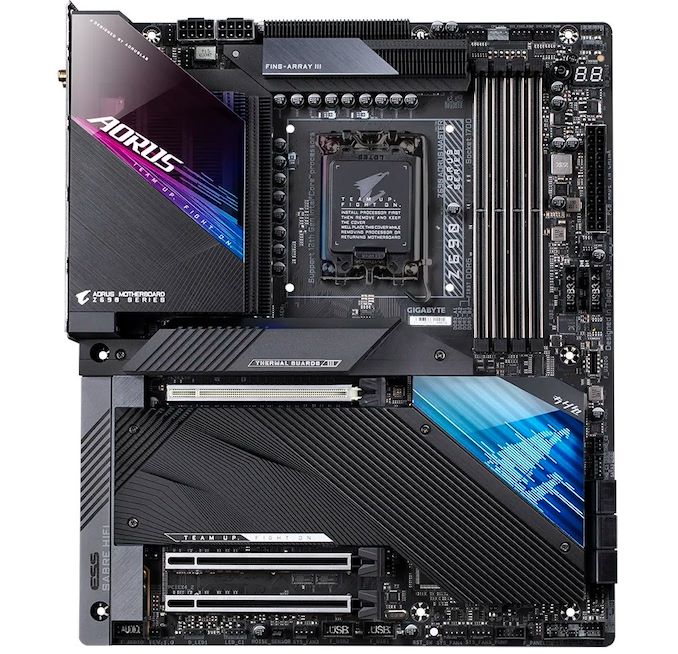
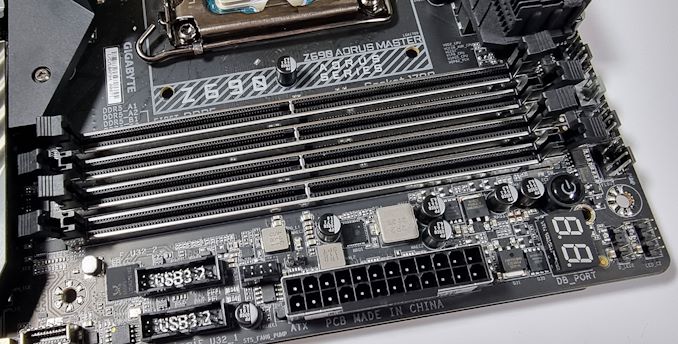
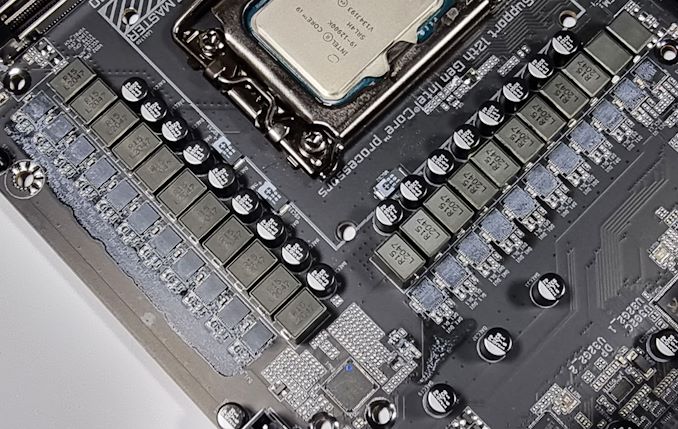
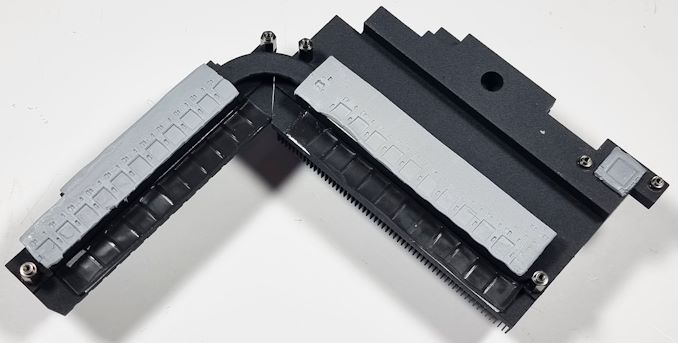


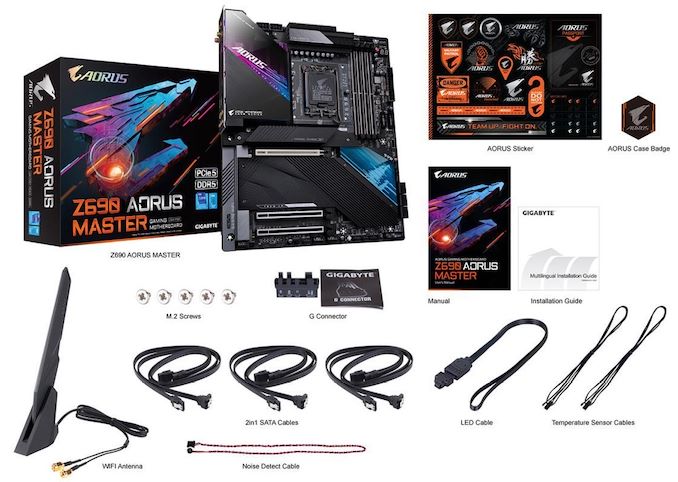








35 Comments
View All Comments
thestryker - Friday, February 25, 2022 - link
I wish this had dual LAN and used the 2.5gb Intel chip as the secondary. I'm sure the Marvell 10gb is likely fine I just prefer having the safety blanket of Intel as an option on all my PCs. Otherwise it seems like a winner so long as you're willing to drop that kind of money on a motherboard.This doesn't seem like a bad price for all of the stuff they've jammed in there, but it does highlight what I've noticed about DDR5 Z690 boards. It seems like they go from barebones to premium without much in between. On the DDR4 side there certainly seems to be a lot more in the middle ground which may simply be because nobody really put out high end DDR4 boards. Hopefully when RPL lands this won't be an issue for the corresponding new motherboards.
zepi - Sunday, February 27, 2022 - link
Intel 2.5Gb chip has been super buggy and many people have problems with it. There are multiple revisions of it and even third re-release still had bugs.Jp7188 - Friday, February 25, 2022 - link
I love big heatsinks, but this board takes it a little far. That m.2 sink is so tall and close to the vid card that the backplate on my card wouldn't fit. I had to cut down the m.2 sink to make it work, which is still preferable to no sink at all.Also, the VRM sinks are too tall to allow some cpu HSFs to fit. The notctua u12s clears the RAM but not the sink at the back of the board.
Jp7188 - Friday, February 25, 2022 - link
One other gripe, I can't get a trident z5 6400 kit to work above 6000. I checked gskill's qvl and sure enough this board is one of the few missing from the list. The board is listed on the qvl for gskill's slower versions of the z5.timecop1818 - Friday, February 25, 2022 - link
imagine overclocking in 2022Silver5urfer - Saturday, February 26, 2022 - link
Why what's the problem ? Like you want to spend on a K series processor and an XMP kit and a top of the line Z series chipset for X series for AMD but want to run in on Stock OOTB clocks ? That's gigantic waste of money. Because you would be better if you do not want to tinker with a H series board and a locked SKU, save money.As for OCing itself, it's a great thing. Since people can get fun out of their tweaking the HW that they own make it personal. And get maximum possible performance out of it. Like people are not just dumb Apple iclowns who just obey what Apple says, Goolag is pretty much same now. PC is the last refuge for owning something and making it purely personal. If you have an issue probably you should stick with Apple products or something like a Surface or some BGA trash.
PeachNCream - Monday, February 28, 2022 - link
It seems like that is a lot of additional cost to personalize something in order to fill what is mainly an emotional want inside of the space of recreational computer usage. So a want within a want in a world full of needs - it may be an unwise choice to do so.Silver5urfer - Monday, February 28, 2022 - link
PC is not just a gaming machine. If anyone thinks so they should discard their overpriced PC and get a Console for $500. It's not a recreational computer usage either. A PC - Personal Computer acronym says it all. It became more and more customizable for x86 until the junk BGA laptops came into the picture taking away the customization and DIY factor.timecop1818 - Monday, February 28, 2022 - link
I wouldn't buy a "XMP kit" in the first place unless it was somehow cheaper than plain Samsung dram on a green pcb from the likes of crucial or Samsung itself. i don't need disgusting rgb crap or giant fins on heatsink for what is essentially running memory ICs designed for 1.35V (or whatever) at much higher voltages just because "you can". of course, it will fucking heat up. normal dram operation doesn't need heatsinks.Jp7188 - Tuesday, March 1, 2022 - link
DDR5 is still in its infancy. It needs high voltage and heatspeaders to approach the latency of DDR4. The non-XMP 4800 CL40 is a joke, so it's high V and heatspeaders for the time being.